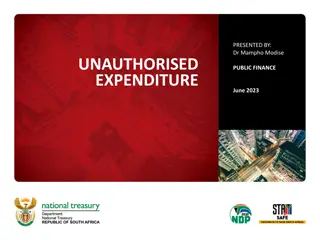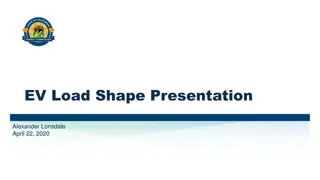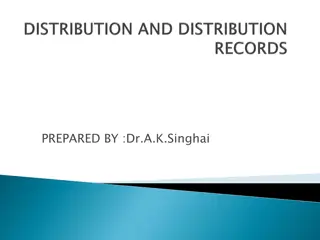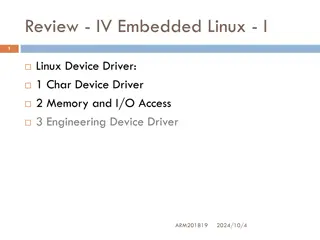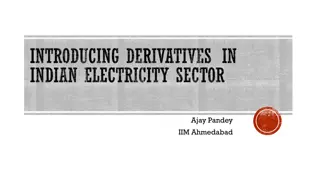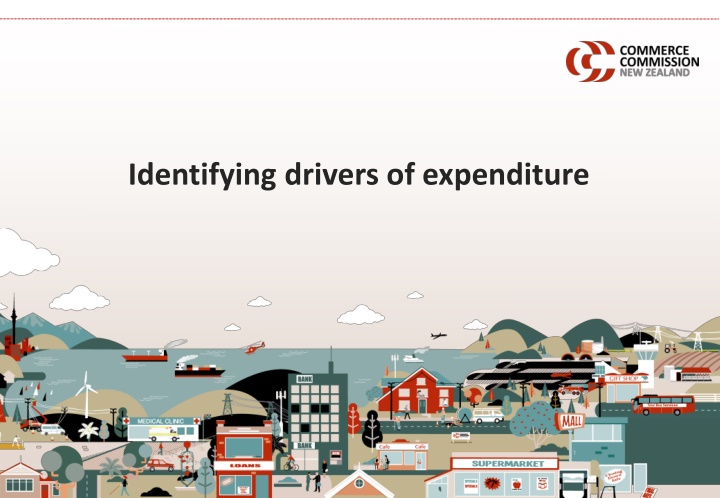
Drivers of Expenditure in Electricity Distribution
Effective regulation requires understanding why businesses spend money. Explore high-level drivers of expenditure – Ownership, Health, Capacity – and examples of specific expenditures associated with each driver. Learn about network characteristics and time factors influencing expenditure in the electricity distribution sector.
Download Presentation

Please find below an Image/Link to download the presentation.
The content on the website is provided AS IS for your information and personal use only. It may not be sold, licensed, or shared on other websites without obtaining consent from the author. If you encounter any issues during the download, it is possible that the publisher has removed the file from their server.
You are allowed to download the files provided on this website for personal or commercial use, subject to the condition that they are used lawfully. All files are the property of their respective owners.
The content on the website is provided AS IS for your information and personal use only. It may not be sold, licensed, or shared on other websites without obtaining consent from the author.
E N D
Presentation Transcript
Reasons for spending money Effective regulation requires an understanding of why a business spends money Many different ways to categorise expenditure. To help with understanding, the initial observation paper provides a high-level framework for thinking about expenditure undertaken by electricity distributors The thinking builds on work previously undertaken when ID requirements were being developed in 2011 2
The framework is built around 3 high-level drivers of expenditure Ownership Owning an asset results in obligations which require expenditure Health Maintaining asset health requires expenditure Capacity Maintaining sufficient capacity requires expenditure 3
Examples of specific expenditure associated with each high level driver Ownership Health Capacity Routine maintenance Vegetation management Compliance with any laws and regulations Random interruptions (eg, storms) Ensuring sufficient health Maintenance of old assets Replacement of old assets Changing requirements of consumers Total demand Locational demand New connections 4
Additional factors can also affect the amount of expenditure The most important additional factors are: Variation in expenditure relative to other distributors (Network characteristics) Evolution of the operating environment over time (Time changes) o Both step-changes and movements in trends o Internal and external factors 5
Examples of network characteristics and time factors Network characteristics Time changes Network design/topology Network topography Consumer types (rural vs. urban, etc.) Changes in laws and regulations Changes in target level of quality Changes in company attitude to risk Changes in input prices 6
High-level framework Network characteristics 1 Ownership Network Expenditure 2 Health 3 Capacity Time changes 7
Questions Are the concepts fully understood? Does the framework provide a good structure for discussing expenditure? Is there anything missing from the framework that should be included? 8
The majority of operating expenditure is a result of the Ownership driver Category of operating expenditure (ID) Ownership Health Capacity Business support Routine and corrective maintenance and inspection System operations and network support Service interruptions and emergencies Asset replacement and renewal Vegetation management 9
Capital expenditure is affected by all three high-level drivers Category of capital expenditure (ID) Ownership Health Capacity Asset replacement and renewal System growth Consumer connection Reliability, safety and environment Non-network assets Asset relocations 10
Using proxies to represent the high- level drivers Awareness of high level drivers enables us to understand expenditure forecasts Broadly, High numbers of assets (Ownership) Higher expenditure High asset health requirements (Health) Higher expenditure Significantly increasing demand (Capacity) Higher expenditure However determining the level of ownership , health and capacity for an individual network is difficult Proxies are therefore needed to represent these high-level drivers from the data available in the information disclosures 11
Broadly, Ownership can be represented by measures of network scale Potential Ownership Proxy ID schedule Number of ways through which scale can be assessed Total energy delivered in 2013 Schedule 12(c) Maximum coincident system demand in 2013 Schedule 12(c) Distribution transformer capacity (distributor owned) Schedule 12(b) Monetary or non-monetary /physical values? Number of assets (by asset category) Schedule 9(a) Total circuit length Schedule 9(c) Total opening RAB value Schedule 4 Determine empirically Number of connections in disclosure year Schedule 8 12
The Health of an asset is a wide- ranging concept Potential Health Proxy ID schedule Suitable measures could be indications of asset health (eg, condition, age) or outcomes (quality standards) Asset condition at start of planning period Schedule 12(a) Percentage of assets forecast to be replaced in the next 5 years Schedule 12(a) Forecast SAIDI and SAIFI by class B and C Schedule 12(d) Operating environment is important Asset Age profile Schedule 9(b) Actual 2013 values for SAIDI and SAIFI by class B and C Schedule 10 Need to consider that condition is self-determined in ID 13
Capacity is most closely linked to changing consumer demand Potential Capacity Proxy ID schedule Affected by increasing total volume, peak, location effects and additional connections Number of forecast consumer connections Schedule 12(c) Forecast total energy delivered to ICPs Schedule 12(c) Forecast maximum coincident system demand Schedule 12(c) Network Headroom (ie, low current utilisation) suggests potential for demand growth without significant expenditure Current utilisation of installed firm capacity (by zone substation) Schedule 12(b) Expected utilisation of installed firm capacity in five years (by zone substation) Schedule 12(a) Capacity-driven expenditure reflects changes in demand rather than absolute levels 14
Other options for proxies/measures? Ownership Modern Equivalent Asset Value (MEAV); and Non-network measures, like regional GDP or regional population Health Condition Based Risk Management (CBRM) Capacity Independent forecasts of demand growth; and Related non-network metrics. 15
Summary The high-level framework with the three drivers of Ownership, Health and Capacity provides a clear way of thinking about distributor expenditure Data from ID provides an opportunity to identify these high- level drivers and use in a comparison against relevant expenditure categories Work still to be done in terms of choosing the most appropriate measures to represent high-level drivers 16






